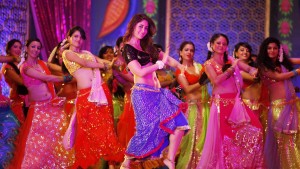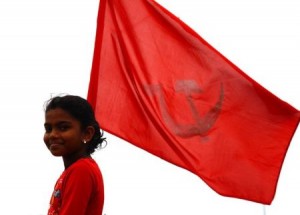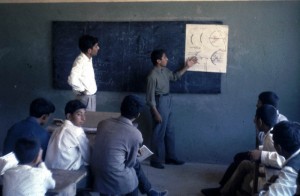
A getaway to Goa
by Ellie Gomes | December 15, 2016
“You want people to come to India, without having to deal with Indians”, Aishwarya Rai tells Martin Henderson in the Bollywood, Jane Austen spin-off Bride and Prejudice. Henderson’s ‘Mr Darcy’ plans on investing in a 5-star resort to attract western tourists. The resort is to be built in India’s smallest yet second richest state, Goa.
This scene was filmed along the coast of Majorda, a small village in the Goan state which, according to Wikipedia, is “famous for its beach”, and not much else. Made famous in the 1960s by the hippie culture, Goa today is a place commonly associated with gap years and commercial tourism. For people who may wish to visit India but still enjoy the luxuries of a typical western holiday, Goa offers beautiful beaches, amazing hotels and restaurants. Because my family is from Goa, I have been lucky enough to visit a number of times. Every visit means doing the rounds of visiting relations I didn’t even realise existed, drinking their tea and forcing down Goan delicacies.
It is likely I have experienced an entirely different side to this place than the 5 million tourists who flock to Goa each year. For me a holiday to Goa consists of a lot of cultural encounters: buying mangoes, bananas and okra with my grandma in the crazy hustle-and-bustle of local Margao market, dodging the stray dog that lives outside my grandparents’ apartment and using the sporadic public transport to get around. And despite this, when I tell people I am visiting Goa on holiday I am so often met with raised eyebrows and laughing: “Oh so you’re not really going to India”, one person joked before my trip in December. Goa’s reputation has been tarnished by its association with Western excursions, but the real cultural significance of this place should not be ignored.
My grandparents, Eleazar and Guilhermina Gomes, both born and bred in Goa, and who now live in London but spend the winter months at their apartment in India to avoid the cold, speak to me over a crackly phone line about their experiences of tourism in their homeland.
Asking my grandmother about whether the tourists bother her, she responds: “No. Tourists have actually brought a lot of great things to Goa. It’s cleaner for a start and there are many more jobs for the locals which means we see far less poverty than there was when I was growing up.” Tourism has undoubtedly improved the prosperity in the state and Goan residents are regarded as having an exceptionally high quality of life, especially in comparison to other areas of India.
“Goa is surely much more commercial. Not so much in Majorda itself but in the bigger towns and the northern areas too. South Goa [where Majorda is located] is much more peaceful and far less-overcrowded than the northern beach towns like Anjuna.”
My grandmother adds: “A lot of people who leave Goa come back and expect it to be the same as it has always been; the same sense of community and the same lifestyle as when we were younger, but of course you can’t expect that. It was bound to become busier once travel and holidays abroad became more affordable and especially when the cost of living here is so much cheaper than other places.”
Talking about the tourists that occupy the beaches of Goa, my grandfather recognises “It’s a shame”. He says “Goa has so much more to offer. The culture here is different to everywhere else in India.” A Portuguese colony from 1510 until it was annexed by India in 1961, Goa boasts incredible Portuguese-styled architecture and beautiful Roman Catholic churches, as well as interesting ‘Catholic’ cuisine which combines Indian and Portuguese flavours to create unique dishes.
The brutal effects of Portuguese colonialisation on Goan culture must be recognised. The introduction of the Portuguese Inquisition into Goa in the sixteenth century, for example, saw the destruction of hundreds of temples and the execution of countless Goan Hindus and Muslims. However, over 500 years the Portuguese influence was subordinated to the existing civilisation, becoming enmeshed with the local culture to create the place we see today: neither Western nor completely Eastern, but independently Goan. The horrific actions of the colonisers must not be forgotten, but the region’s unique qualities are startling, and worth appreciation.
I visited ‘Old Goa’ during my last trip, a historical city in the north of the region. It is listed as a UNESCO World Heritage Site and is famous for its Church of Bom Jesus, completed in 1605, which contains the tomb of St Francis Xavier. Such Portuguese churches and convents represent the evangelization of Asia and the buildings themselves were highly influential regarding the spread of Baroque art in all the countries of Asia where missions were established. The atmosphere in this colonial city is entirely different to anywhere else in Goa; a quiet and reflective place, it counteracts any idea of this district being an “India…without…Indians”. The tourists here were predominantly Goans, visiting the churches on pilgrimages, quite different from those that crowd to the beach.
“Beaches are similar anywhere you go,” my grandfather continues, “and while most tourists are fine, some act as though they would at home, refusing to integrate in Goan culture or learn more about this place. They don’t care about what happens to Goa or Goans but want life to be like their own country, just with a beach”.
Photo: Mahesh Bhanupanth




